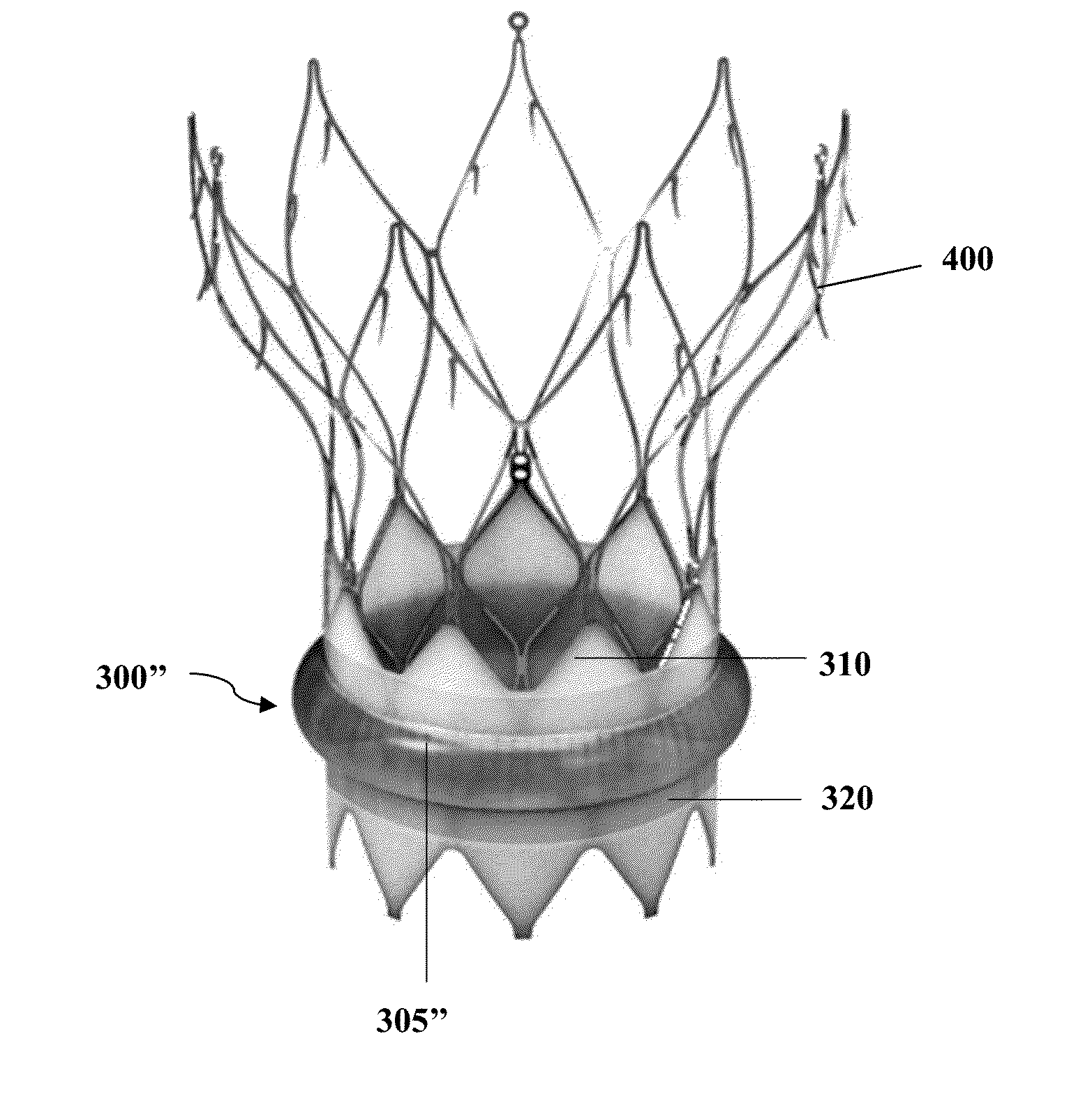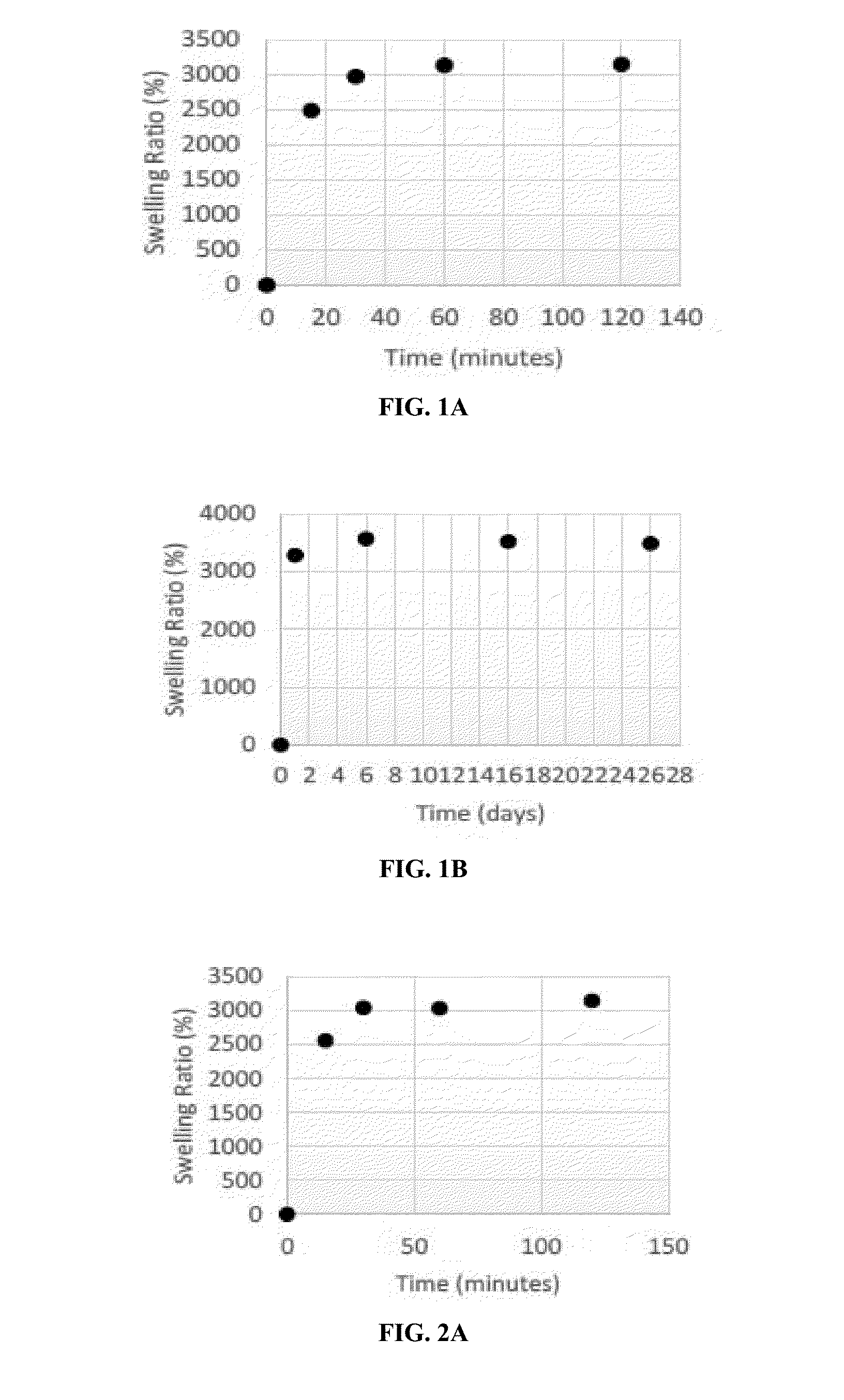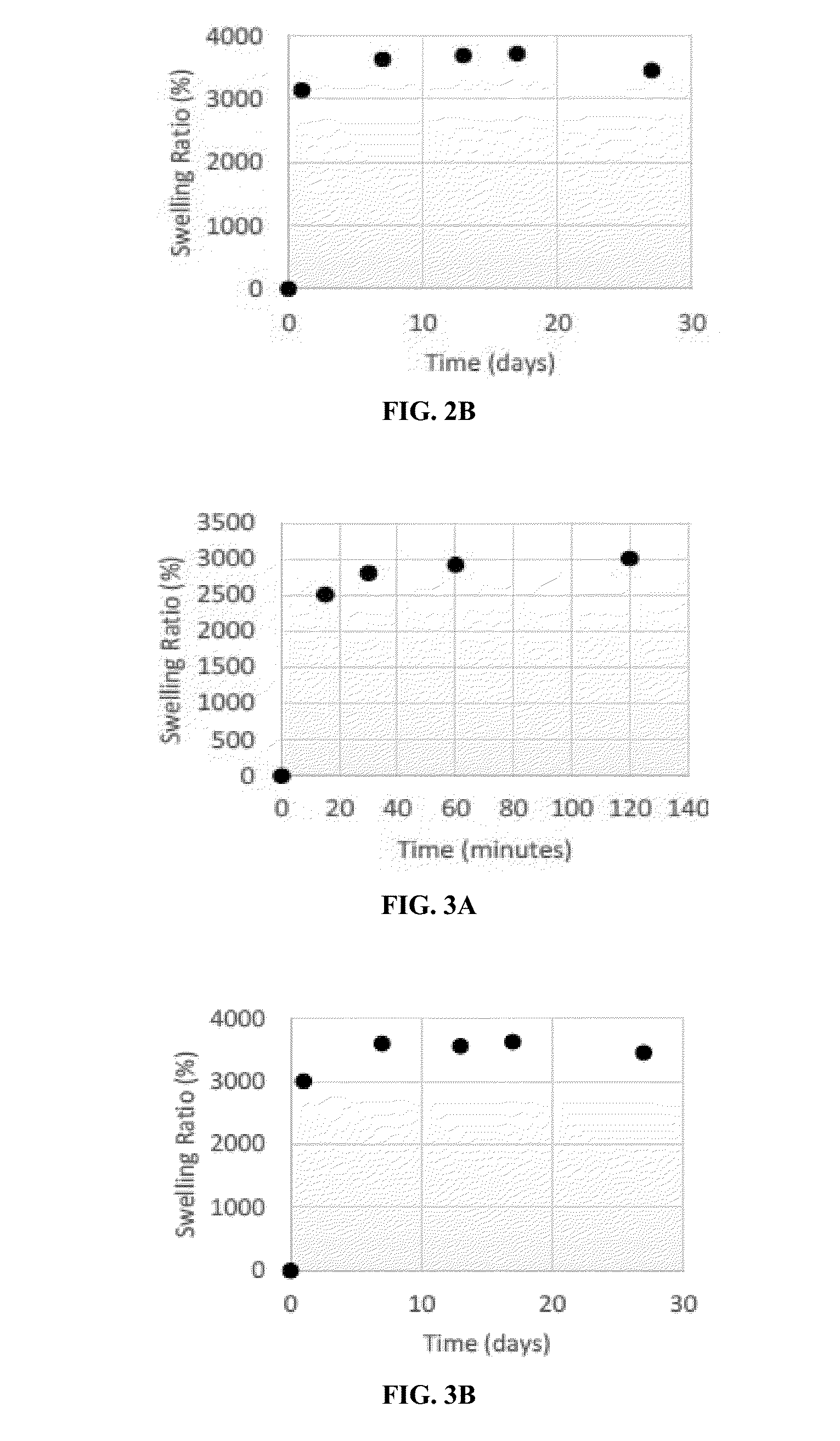Highly expandable hydrogels in medical device sealing technology
a technology of expandable hydrogels and medical devices, applied in medical science, blood vessels, pharmaceutical non-active ingredients, etc., can solve the problems of life-threatening, severe hemorrhage or other complications including sudden death, and so as to eliminate the incongruity of prosthetics and prevent leakage. , the effect of excellent sealing
- Summary
- Abstract
- Description
- Claims
- Application Information
AI Technical Summary
Benefits of technology
Problems solved by technology
Method used
Image
Examples
example 1
Rapid Swelling of Acrylamide Gels in Serum
[0198]Acrylamide gels (T10-00.06) demonstrated a rapid swelling with a swelling ratio of 3000% when placed in bovine serum. The gels swelled rapidly within the initial 15 min, and then reached a maximum swelling ratio of 3500% when stored in bovine serum long term (FIGS. 1A and 1B). The acrylamide gels retained this swollen state over long-term storage in serum, demonstrating long-term stability of the gels in bovine serum.
[0199]The rapid swelling and the stability of the gels are provided by the ratio of monomer to crosslinker (w:w), as presented in Table 1. The concentration of the crosslinker with respect to the monomers is low enough to allow for formation of pores with long polymer chains. The pores with long polymer chains maintain their swelling capacity after drying and rehydration of the gels. These pores also retain their size following rehydration and provide for the long-term stability of the gels.
example 2
Protectants do not Affect the Swelling or Stability of Acrylamide Gels
[0200]Acrylamide gels containing the protectant glycerin also demonstrated a rapid swelling and reached a swelling ratio of 3000% within the initial 15 min of swelling. Pure acrylamide gels containing 0.1% to 1% glycerin swelled to the swelling ratio of over 3500% when stored long-term in bovine serum (FIGS. 2A-3B). The swelling ratio of gels containing glycerin also remained stable over time, demonstrating long-term stability of the swelling properties.
example 3
Protectants Protect Swelling Characteristics and Gel Integrity Following E-Beam Radiation
[0201]This study demonstrated that the network structure of samples was destroyed after radiation. However, the structure was well-maintained by the addition of protectants such as glycerin. It was demonstrated that the samples containing glycerin showed stable long-term data on their swelling characteristics while this data was not achievable for samples in all solutions in the absence of protectant because of the lack of the presence of robust network structure.
[0202]In the absence of glycerin, the maximal swelling ratio of a pure acrylamide gel reduced from about 3500% to about 3000% following low-temperature E-beam radiation (FIGS. 4A and 4B). Also, the radiation caused a loss of gel shape and integrity in the absence of glycerin. The gel sample was viscous and did not retain its shape following radiation.
[0203]Addition of glycerin protected the swelling characteristics of the gels as well a...
PUM
| Property | Measurement | Unit |
|---|---|---|
| temperature | aaaaa | aaaaa |
| mechanical strength | aaaaa | aaaaa |
| mechanical strength | aaaaa | aaaaa |
Abstract
Description
Claims
Application Information
 Login to View More
Login to View More - R&D
- Intellectual Property
- Life Sciences
- Materials
- Tech Scout
- Unparalleled Data Quality
- Higher Quality Content
- 60% Fewer Hallucinations
Browse by: Latest US Patents, China's latest patents, Technical Efficacy Thesaurus, Application Domain, Technology Topic, Popular Technical Reports.
© 2025 PatSnap. All rights reserved.Legal|Privacy policy|Modern Slavery Act Transparency Statement|Sitemap|About US| Contact US: help@patsnap.com



